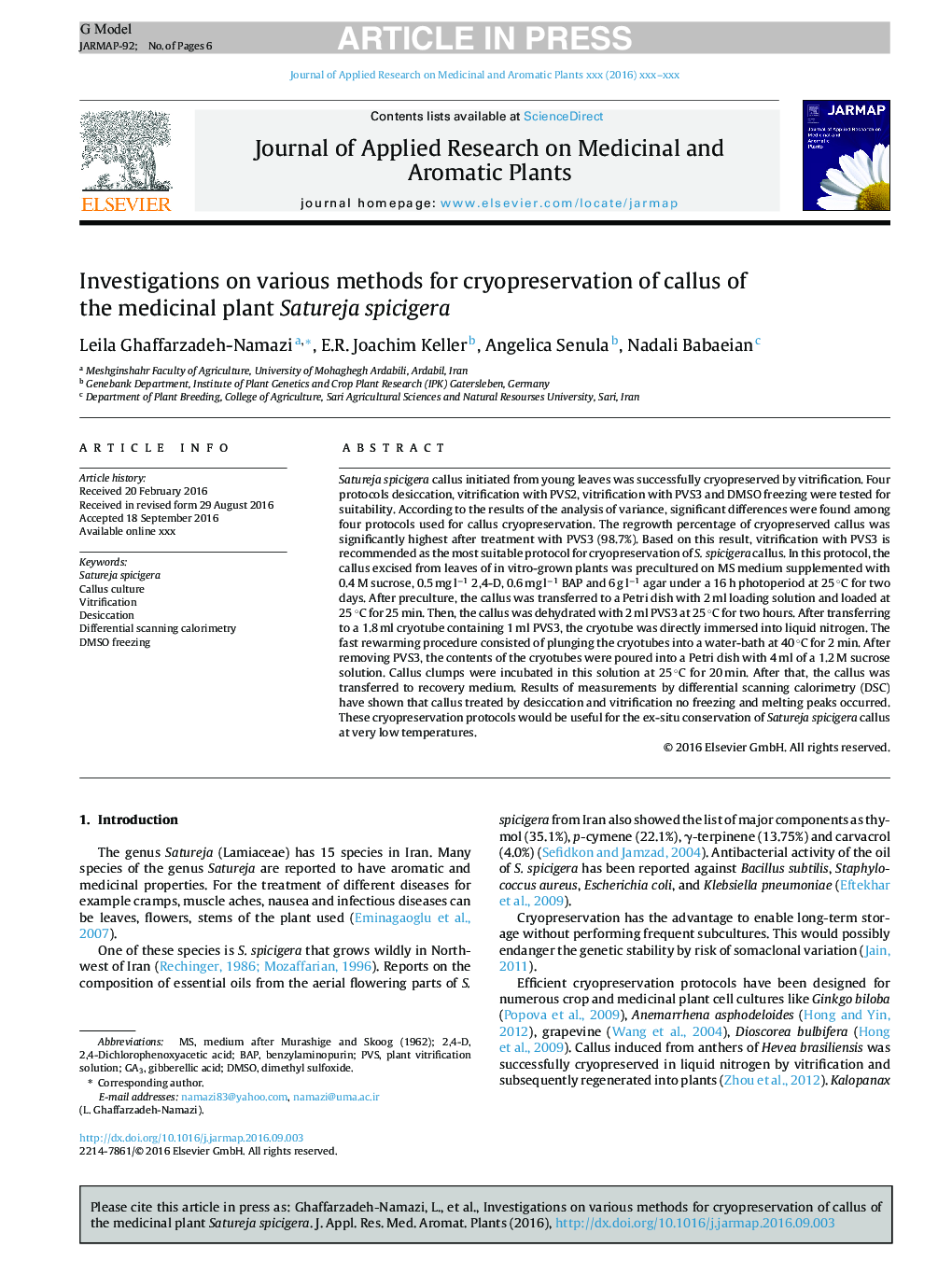| Article ID | Journal | Published Year | Pages | File Type |
|---|---|---|---|---|
| 5635226 | Journal of Applied Research on Medicinal and Aromatic Plants | 2017 | 6 Pages |
Abstract
Satureja spicigera callus initiated from young leaves was successfully cryopreserved by vitrification. Four protocols desiccation, vitrification with PVS2, vitrification with PVS3 and DMSO freezing were tested for suitability. According to the results of the analysis of variance, significant differences were found among four protocols used for callus cryopreservation. The regrowth percentage of cryopreserved callus was significantly highest after treatment with PVS3 (98.7%). Based on this result, vitrification with PVS3 is recommended as the most suitable protocol for cryopreservation of S. spicigera callus. In this protocol, the callus excised from leaves of in vitro-grown plants was precultured on MS medium supplemented with 0.4 M sucrose, 0.5 mg lâ1 2,4-D, 0.6 mg lâ1 BAP and 6 g lâ1 agar under a 16 h photoperiod at 25 °C for two days. After preculture, the callus was transferred to a Petri dish with 2 ml loading solution and loaded at 25 °C for 25 min. Then, the callus was dehydrated with 2 ml PVS3 at 25 °C for two hours. After transferring to a 1.8 ml cryotube containing 1 ml PVS3, the cryotube was directly immersed into liquid nitrogen. The fast rewarming procedure consisted of plunging the cryotubes into a water-bath at 40 °C for 2 min. After removing PVS3, the contents of the cryotubes were poured into a Petri dish with 4 ml of a 1.2 M sucrose solution. Callus clumps were incubated in this solution at 25 °C for 20 min. After that, the callus was transferred to recovery medium. Results of measurements by differential scanning calorimetry (DSC) have shown that callus treated by desiccation and vitrification no freezing and melting peaks occurred. These cryopreservation protocols would be useful for the ex-situ conservation of Satureja spicigera callus at very low temperatures.
Keywords
Related Topics
Life Sciences
Agricultural and Biological Sciences
Agricultural and Biological Sciences (General)
Authors
Leila Ghaffarzadeh-Namazi, E.R. Joachim Keller, Angelica Senula, Nadali Babaeian,
